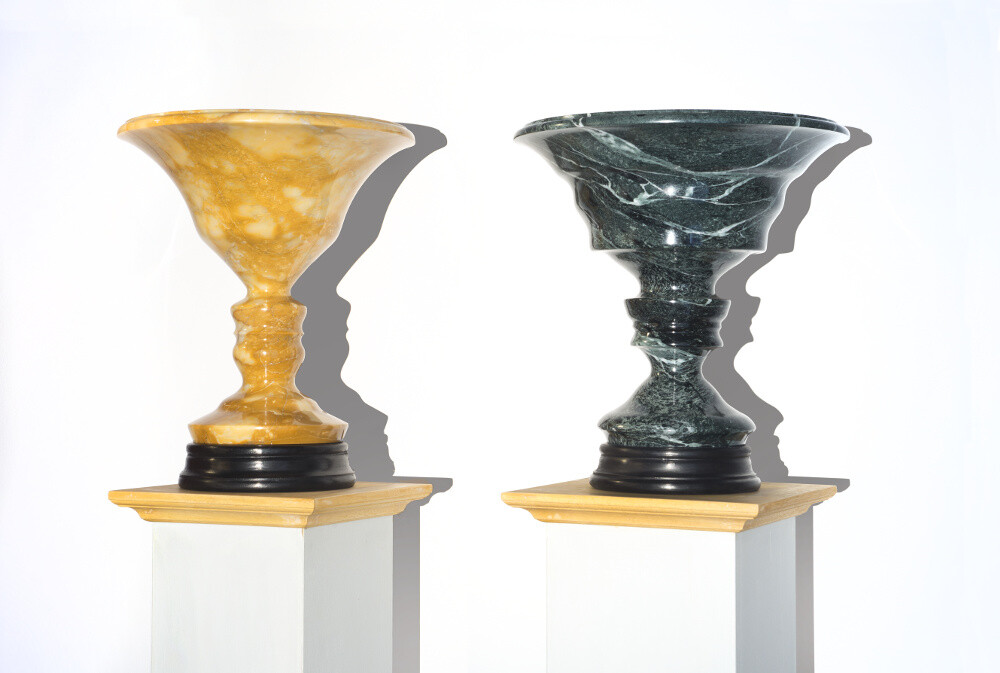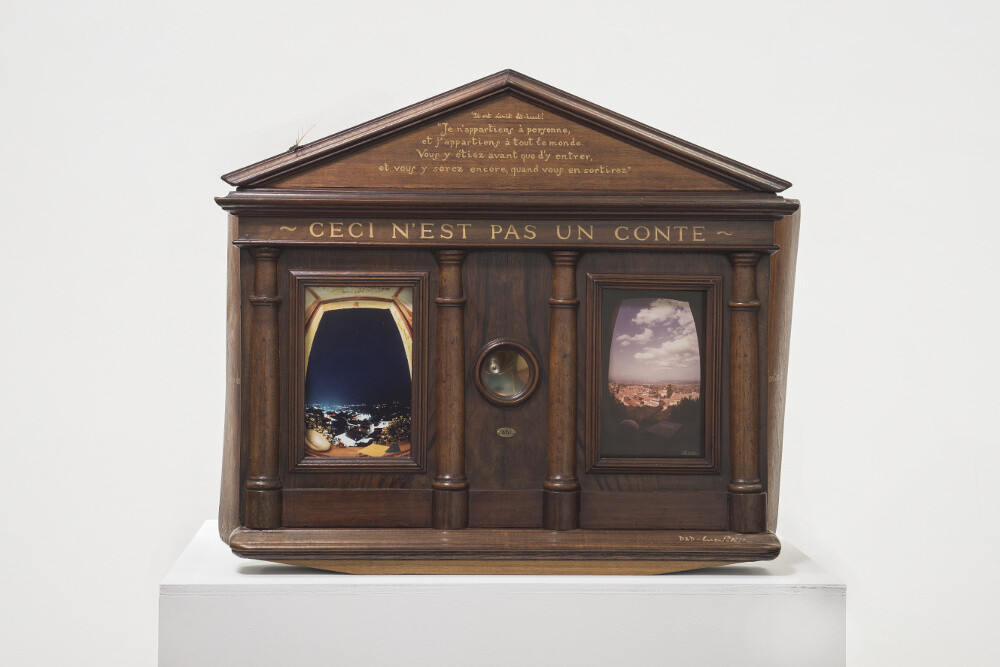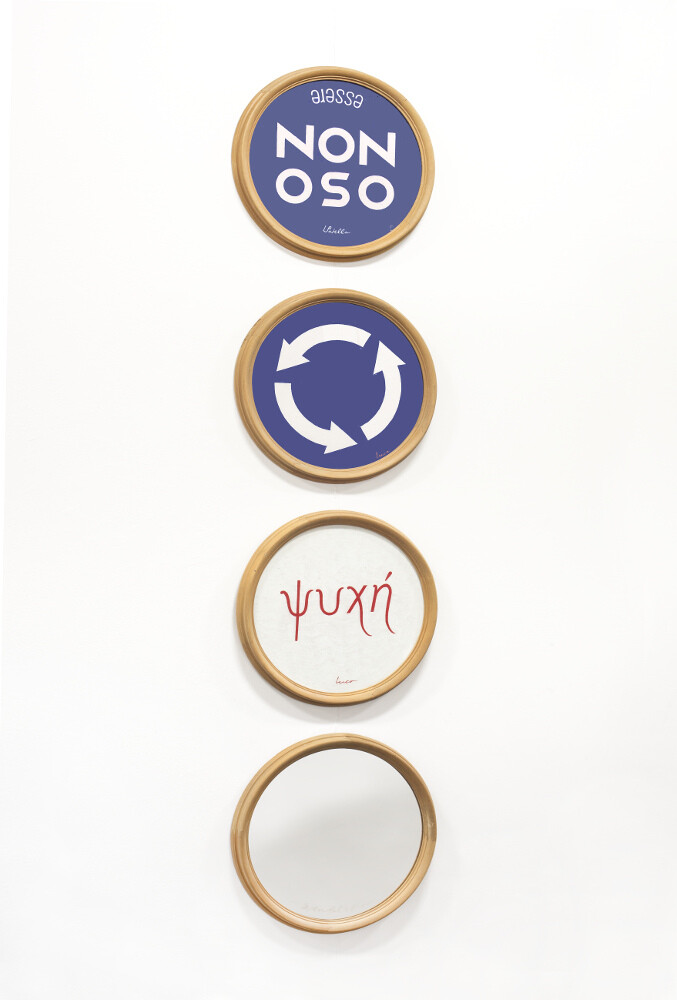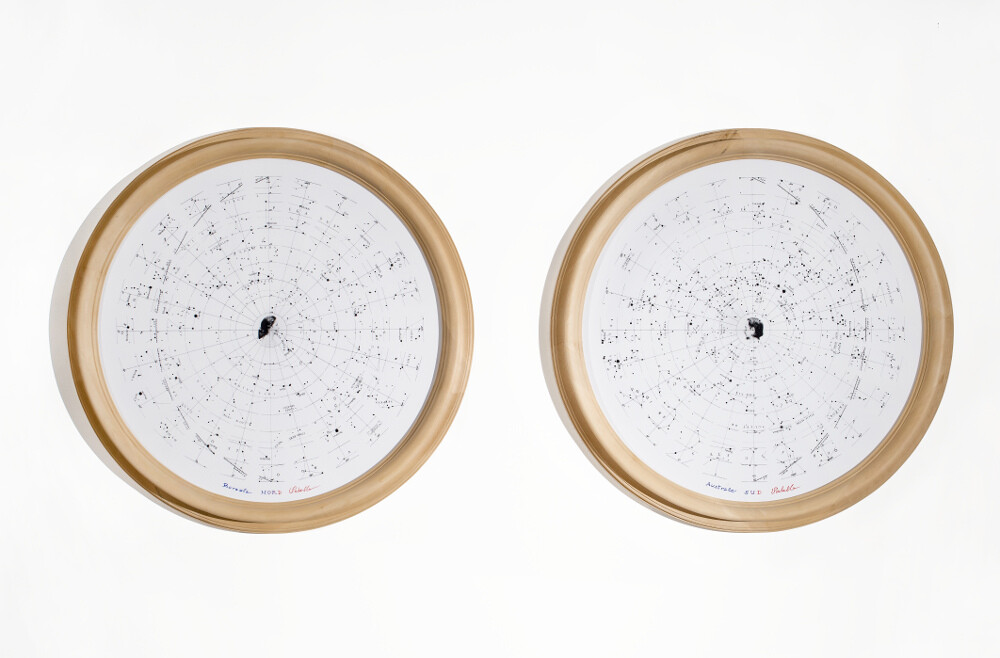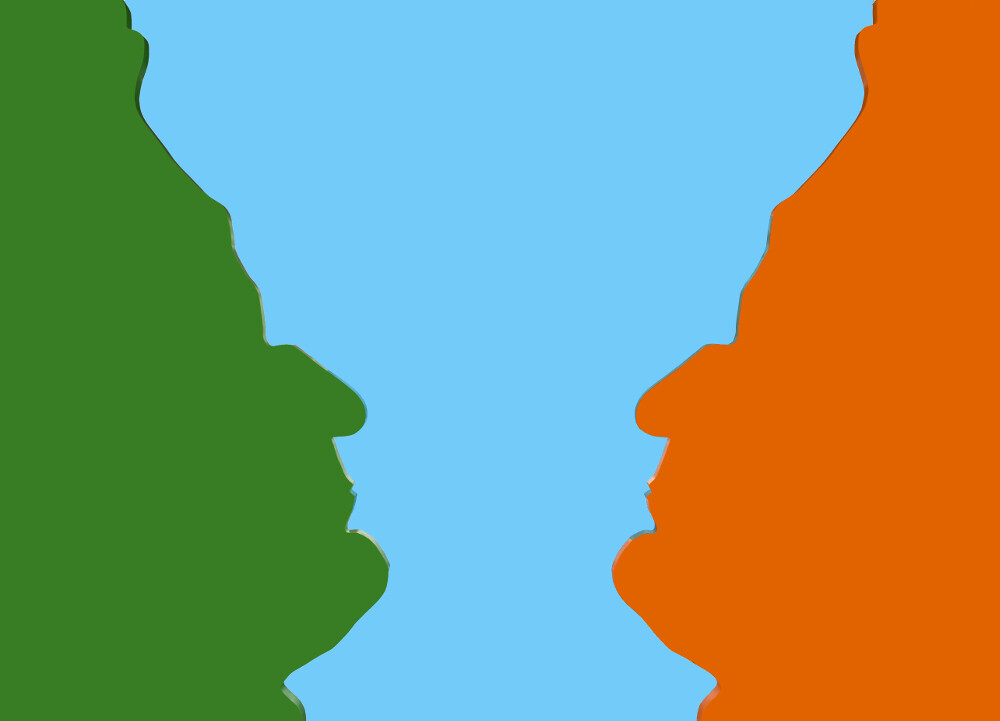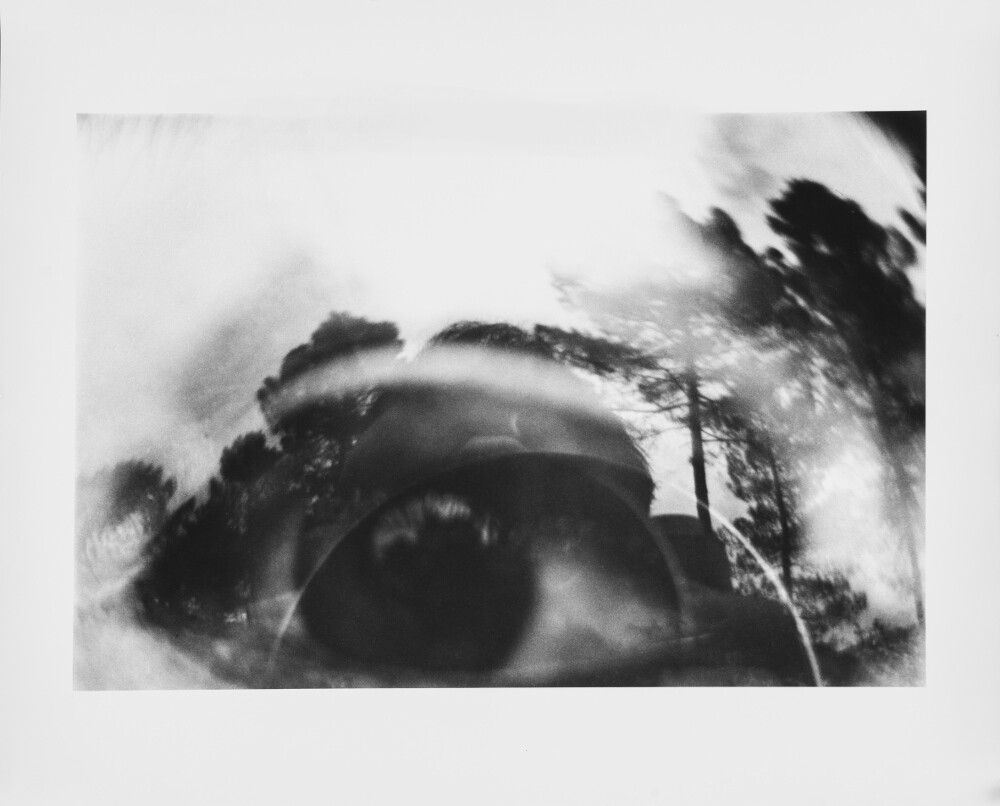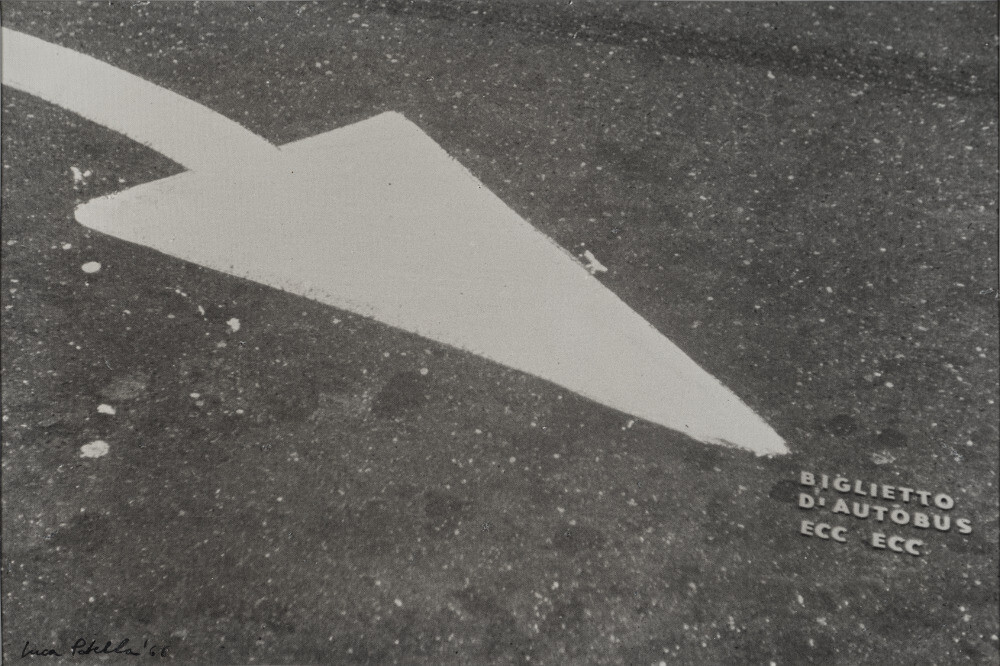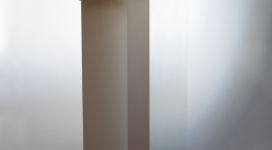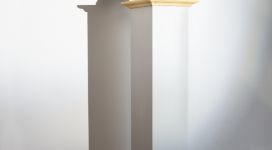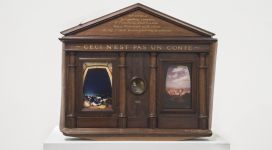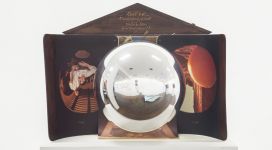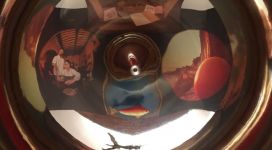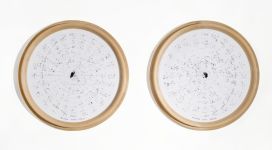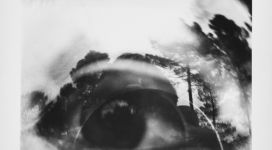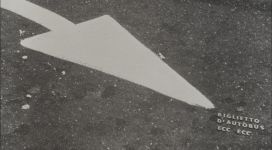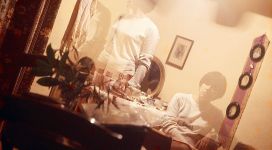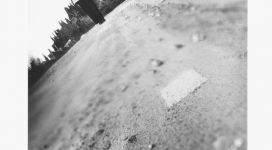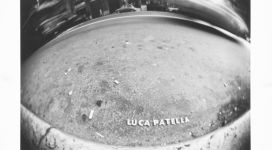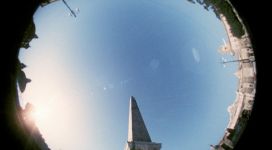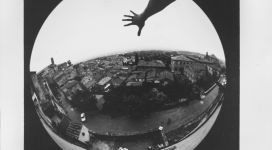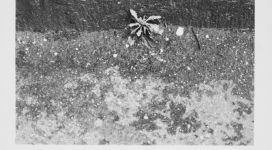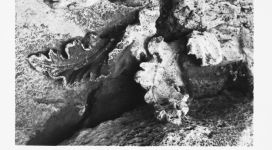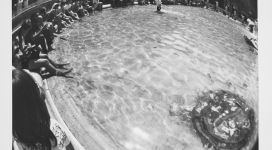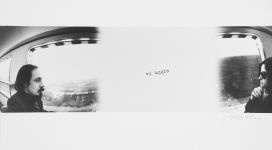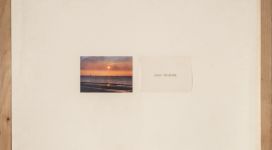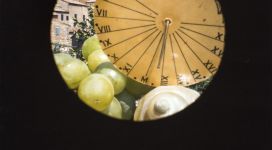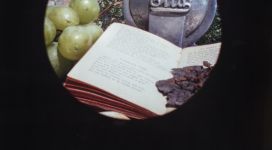| LUCA MARIA PATELLA | Exhibition 2017 | |
| Miart 2017 | ||
| Catalog |
Luca Maria Patella (Rome 1934 – 2023) also lived in France and South America. His background is artistic (in Rome and Paris), due to his father, Luigi, cosmographer-humanistic / scientific (structural chemistry: he was the young assistant – for the relationships between “resonance” and biochemistry – of Linus Pauling, twice Nobel prize winner) / and psychoanalytical (from 1967, with Ernst Bernhard). His principal work as an artist began in the mid 1960s and his interests embraced both art and science, using various experimental means of expression, such as photography (colour slides, large toned photographic canvases, colour and b/w prints and various personal techniques), “film-works”, video, sound, books, computers, painting, engraving and installations. He studied both artistic and scientific subjects and was strongly influenced by astronomy, structural chemistry and analytical psychology, becoming inventive in all these fields during his years in Rome and Paris. He had many friends and acquaintances among international artists and personalities, amongst whom Marcel Duchamp, André Masson, André Breton, Jacques Lacan, Giorgio De Chirico, Michelangelo Antonioni, Pier Paolo Pasolini, Lionello Venturi, Roman Opalka, S.W. Hayter, Leo Dohmen, Max Lüscher, Joan Jonas, Paul Watzlavick, Meret Oppenheim, Andy Warhol Sol LeWitt. He stands out in the world of Italian art thanks to his invention of complex technical and creative procedures. He has produced meticulous crossovers, from the pre-conceptual transformation of the camera to the absence of “weight” (moralistic) of the film camera, from multimedia and interactive environments to behaviour, from sound to word, from the installation of large sculpture-objects as “projective” texts for writing and “work-books” (one of his favourite fields of research, which often incorporate sets of works – Io sono qui (Avventure & cultura), projective book in execution, ’70-1975; DAN, DEN, PIR, DUCH, Supergruppo ed., Ravenna 1980; up to Stazione di Vita / Dichiarazioni Noètiche, (2003)-2016, Morra e Lemme associated publishers. He is also active in the field of literature – essays (Diderot proto-psicoanalista, Grifo publisher, 1984), novels and poetry – and criticism. We quote a relevant article: “Marcel stripped bare by.. Luca Maria Patella”, Artforum international, october 1988; ..and one more recent: “Luca Maria Patella, MUT / TUM”, Doppio Zero, aprile 2017.
Since 1964, with Luca Patella, Grafica Contemporanea, Galleria La Nuova Pesa, Rome, he has held one-man shows and taken part in many group exhibitions in Europe and all over the world, amongst which the XXXIII Venice Art Biennale, 1966 (he would participate in six further biennales in 1972, 1978, 1980, 1986, 1993 and 2011); the V Paris Biennale, 1967 (where he obtained the special prize for photos and film); the San Marino Biennale, 1967; Information, MoMA, New York, 1970; Luca Maria Patella, Galerie Lara Vincy, Paris, 1979; Luca Patella, Museuo de Arte Contemporaneo, São Paulo, 1982; Duchamp und die Avant garde seit 1950, Ludwig Museum, Cologne, 1988; Temps, la quatrième dimension, Palais de Beaux Arts, Brussels; Barbican Centre, London; Museum Moderner Kunst, Vienna, 1984-’86; Roma Anni ’70, Palazzo delle Esposizioni, Rome, 1990; Ergo, materia. Arte Povera, MUAC, Mexico City, 2010; End of Earth, Land Art to 1974, MOCA, Los Angeles, 2011; GNAM, Rome, 2010-2011 (solo show where is also presenteded Sfera per Amare – bought by Palma Bucarelli from the Attico Gallery in 1969); Roma Pop city, MACRO, Rome 2016; Laura Bulian Gallery e NABA, solo show, Milan 2017.
At the same time, Patella has created a vast range of media products since the 1960s, with experimental and animated films (16 and 35 mm, also medium and full-length films, Terra Animata 1967; SKMP2 1968; Vedo, Vado! 1969 and many others), videos (Grammatica Dissolvente 1974-1975; Gazzetta Ufficiale di Luca Patella 1974; Viaggio in Luca (Antwerpen) 1976). The films have been restored with the Cineteca Nazionale in Rome, which recently presented them in 35 mm format in the Sala Volpi at the Venice Cinema Biennale. The videos, on the other hand, have been restored at the REWIND laboratory of Dundee University, Scotland. With his partner, Rosa Foschi Patella, concentrated on film animation (Corona Cinematografica, 1966) and, again in the same year, with he he organized an Experimental Centre of Photographic and Cinematographic Research, and it was taught, as well as the Calcografia Nazionale.
Other anthological exhibitions in museums and galleries include the Teatro di via Belsiana, Rome 1965; Galleria l’Attico, Rome 1968, 1969 and 1974 (Luca Patella e il test Lüscher); Galleria Apollinaire, Milan 1971 (Talking Walls); New Italian Art, Walker Art Gallery (Talking Trees), Liverpool 1971; Incontri internazionali d’Arte, Roma, 1972, 1973 and 1987; Reis doorheen Luca Patella, ICC, Antwerp 1976; La fotografia di Luca Patella, Mantua 1978; Paolini, Patella, Pistoletto, Calgografia Nazionale, Rome 1980; DEN & DUCH dis-enameled (several hundred works, installations and theories – four books – concerning Diderot and Duchamp), MUHKA, Antwerp 1990; Vasa Physiognòmica, Rome, Milan, Cologne, Antwerp as of 1982; Patella ressemble à Patella: l’opera 1964-2007, organized by the Fondazione Morra (with book-catalogue of the same name), Castel S. Elmo, Naples 2007; Escher, Chiostro del Bramante, Rome 2014 (up to Escher at Palazzo Reale, Milan 2017); Ambienti Proiettivi Animati ’64-’84, MACRO, Rome 2015. In the same year, Videoroom at the Boijmans Van Beuningen Museum in Rotterdam, and the Film-works in London at the Tate Modern; Puca Latella, Galleria Adalberto Catanzaro (with the book-work published by Ezio Pagano), Bagheria 2016; La Fotografia di Luca Maria Patella 1965-1985, Miart, Il Ponte gallery, Milan, 2017 (with in-folio book curated by Alberto Fiz); Nuova Collezione del MAXXI, Rome, 2017; NON OSO / OSO NON essere (solo show), Il Ponte gallery, Florence 2017 (book with the same name publiched by Gli Ori) Arte mi sia!, Certosa di San Martino, Naples 2017; Casa Morra, Naples 2018.
The artist is known for his complex semantic relations and techniques created in his work: painting, sculpture-objects, installations, photographs, films and video, graphic works, books and writing. Patella is a nationally and internationally renowned research artist, and his work has aroused the interest of critics and intellectuals such as Giulio Carlo Argan, Jacqueline Risset, Florent Bex, Michel Baudson, Jan Foncé, Margareth Sinclair Pentland, Bernard Blistène, Pierre Restany, Maurizio Calvesi, Renato Barilli, Gillo Dorfles, Italo Zannier, Harald Szeemann, Claudio Meldolesi, Achille Bonito Oliva, Umberto Eco, Alberto Fiz, Raul Dal Molin Ferenzona, Fernanda Pivano, Ettore Sottsass, Lea Vergine, Alvin Curran, Elio Grazioli, Luciano Marucci, Giuseppe Morra, Stefano Chiodi, Andrea Cortellessa, Laura Leuzzi, Marco Scotini Francesco Stocchi, Anna Maria Licciardello..
His works are found in important museum collections, such as the Stedelijk Museum (Amsterdam), the MoMA (New York), the Gordon Matta-Clarck Foundation (Antwerp), the Galleria Nazionale d’Arte Moderna, Macro and the Istituto Nazionale per la Grafica (Rome), the Polaroid Corporation (Boston), Mart (Trento), the Museo di Fotografia Contemporanea (Milan), CRAF (Spilimbergo), il CSAC (Parma) and the national libraries of Paris, Florence and Rome. Over the years he has received international prizes such as the Biennale del Cinema(experimental section, Venice, 1969), Premio Pascali (1976), and for his poetry: Grinzane Cavour, Feronia, and Vincenzo Cardarelli(2002). Patella was commissioned the large Fontaine Physiognomique de Magritte, made of local historic marine stone called pierre bleue, by the ‘Comité des Arts de la Ville de Bruxelles’ for the Place de Ninove in Brussels (2002). He has also been awarded the Premio per l’Interdisciplinarietà by the University of Bologna Art, Music and Show Business (DAMS) faculty (2003). XXI Premio Friuli Venezia Giulia Fotografia, Spilimbergo (2007); Premio Franco Cuomo, Palazzo Senatorio, Rome (2015). A short feature on the work of Patella (directed by Ileana Zaza) won the DOC Prize of the Aquario Romano in collaboration with the MAXXI, Rome (2016). To Luca Maria Patella is conferred the title of “Academic of the University of Roma Tre” (2016).
